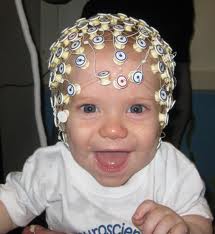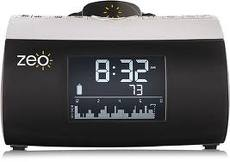 In the previous post I noted that my monthly average ZQ over the past 3+ years (August 6, 2009 to December 19, 2012) has regularly hovered around 90, with the highest monthly average being 96 and the lowest 86. Now, looking more closely at the data, I can see that my worst and best nights of sleep varied quite dramatically from that median, in both directions.
In the previous post I noted that my monthly average ZQ over the past 3+ years (August 6, 2009 to December 19, 2012) has regularly hovered around 90, with the highest monthly average being 96 and the lowest 86. Now, looking more closely at the data, I can see that my worst and best nights of sleep varied quite dramatically from that median, in both directions.
The ZQ is the Zeo sleep monitor’s overall sleep quality score, a number that accounts for total amounts of REM sleep, deep sleep, and time awake during sleep. Using this metric, I was able to identify the extreme ends of my overall range of sleep. My lowest ZQ was 57, on November 9, 2009. On that night I slept a total of 4 hours and 48 minutes, with 1 hour 10 minutes of REM sleep, 55 minutes of deep sleep, and 5 minutes in waking. My highest ZQ was 127, on January 7, 2012, when I slept a total of 10 hours 59 minutes, with 3 hours 37 minutes of REM sleep, 1 hour 27 minutes of deep sleep, and 0 minutes in waking.
Here are the 16 lowest ZQ nights from the last three years:
57 November 9, 2o11
58 January 21, 2010; August 29, 2011
60 September 16, 2011; July 16, 2012
62 October 3, 2012
63 June 16, 2012; September 10, 2012
64 December 16, 2009; May 20, 2010
65 August 12, 2010; September 9, 2011; September 12, 2012
66 November 4, 2011
67 March 15, 2010; January 6, 2012
I still need to double-check to see that none of these low ZQ nights was the result of faulty technology. But assuming they’re all valid records of a given night’s sleep, I immediately notice a few things. First, there are no consecutive nights of very low ZQ. The closest are September 10 and 12, 2012, when my children were in the midst of ending summer and starting the new school year. Second, many of the lowest ZQ nights came in the late summer and fall of 2011, when my family was moving to a new city. It makes sense that my sleep would be especially disrupted during that transitional time. Third, the low ZQ on October 3, 2012 was very likely due to my anxious feelings the night after the first Presidential Debate of the 2012 campaign between Barack Obama and Mitt Romney.
I suspect that some of these low ZQ nights came before an early-morning departure for a trip, or following a late and stimulating social event.
Overall, it looks like nearly all the low ZQ nights have some direct connection to an unusual circumstance in my waking life.
Here are the 13 highest ZQ nights from the last three years:
127 January 7, 2012
125 November 21, 2010
123 November 22, 2009
120 November 23, 2011
119 January 8, 2012
117 November 16, 2011; January 9, 2012
116 November 22, 2010
115 November 23, 2010, November 24, 2010, July 15, 2011
114 October 21, 2010, January 21, 2012
My highest streaks are January 7-9, 2012, November 21-23, 2011, and November 21-24, 2010. Not surprisingly, all of these nights of very high ZQ took place during vacations at the same quiet and beautiful oceanside resort. No mystery there! Late fall and early winter seem to be the prime times for high ZQ, though I’ll have to separately analyze nights on vacations vs. nights at home to see if the influence comes from the changing season (longer nights) or the fact of being on a holiday trip, or some combination of the two.
It looks like the biggest rebound from a low to a high ZQ night occurred on January 6-7, 2012, when I went from a 67 to a 127. The first night was prior to an early-morning departure for a vacation, and the second night marked the beginning of that vacation.
Again, my overall impression is that the highest ZQ nights occured in direct relation to certain kinds of unusual waking life circumstances at that time.
Here, it seems, is another instance of deep consistency in my sleep patterns. My worst and best nights of sleep deviate by a comparable degree from my normal ZQ baseline of around 90. My worst nights are 30+ lower than the baseline, and my best nights are 30+ higher than the baseline.
Next step is to look at possible connections with dreams….





